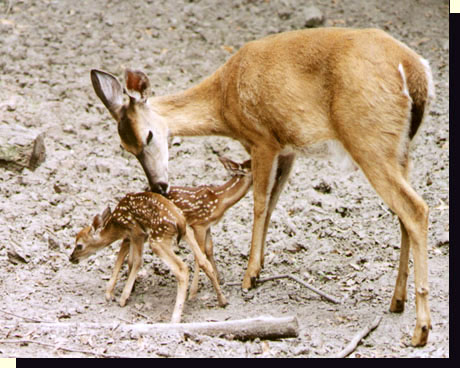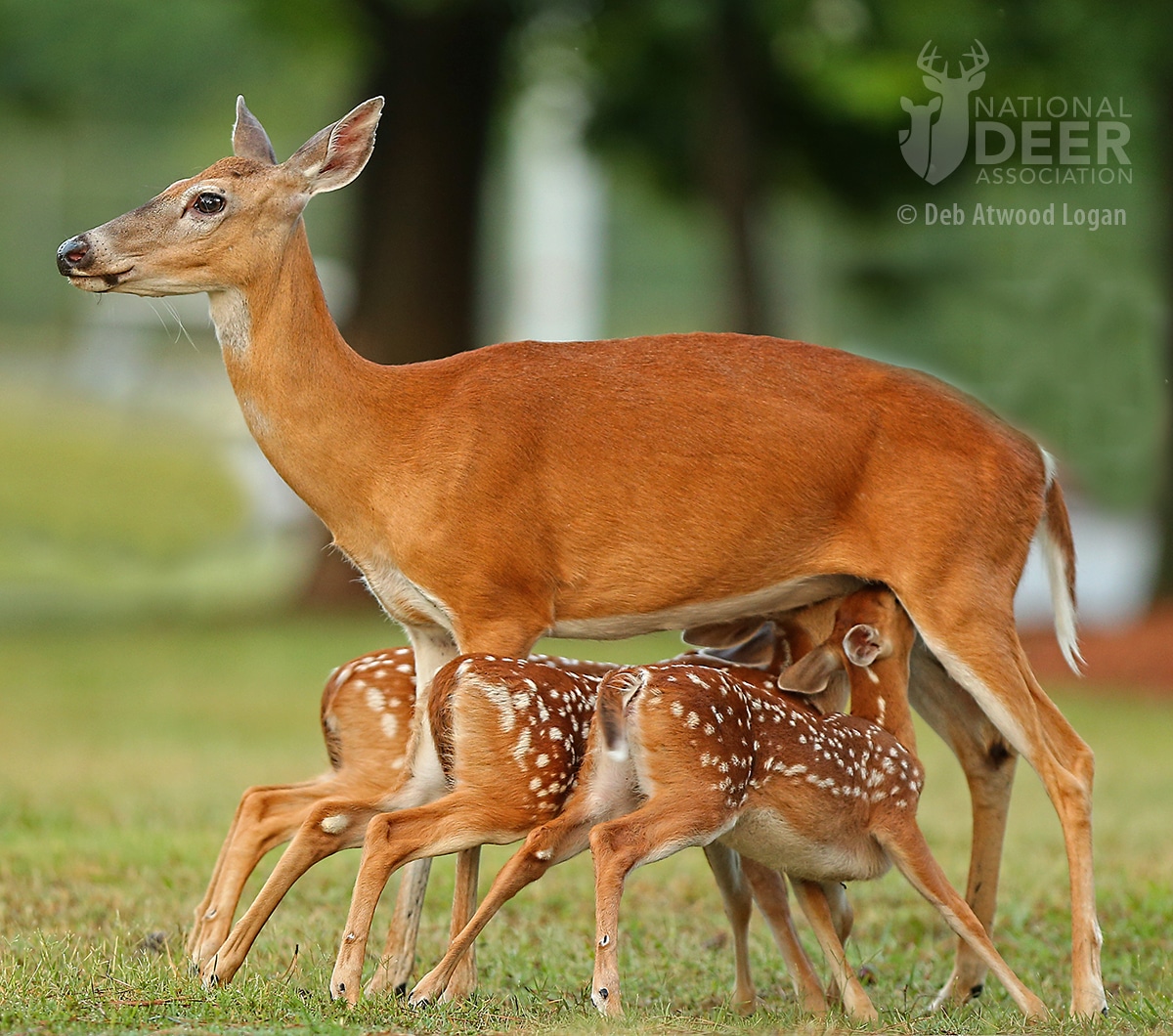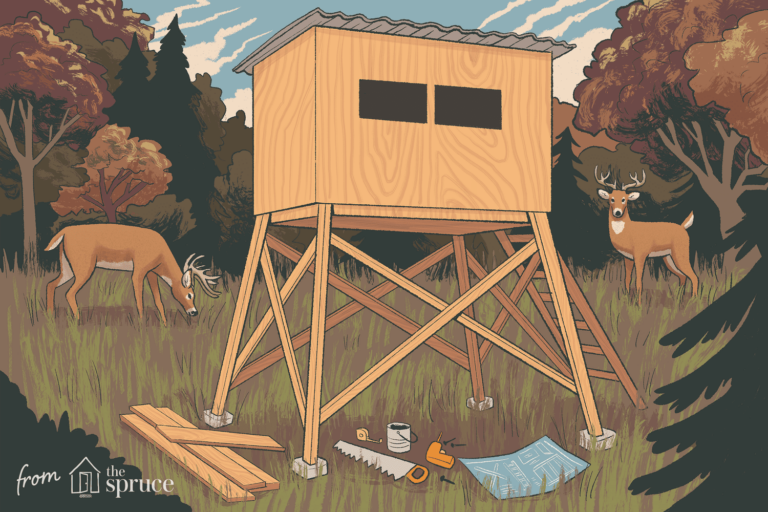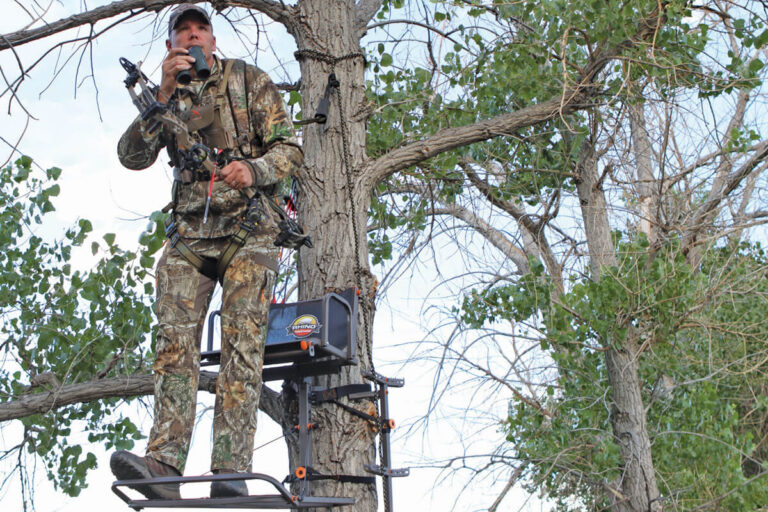When Do Whitetail Deer Give Birth: Unveiling Fawn Seasons
Whitetail deer typically give birth in late spring or early summer. The exact timing can vary based on location and climate.
Understanding when whitetail deer give birth helps in wildlife management and conservation. These deer, known for their white tails, are common in North America. Their birthing season aligns with optimal conditions for fawn survival. During this time, food is abundant, and the weather is mild.
This season ensures the fawns have the best chance to grow and thrive. By knowing the birthing times, wildlife enthusiasts and researchers can better protect these beautiful creatures. In this blog, we will explore the factors influencing their birthing season and what it means for their survival. Stay with us to learn more about these fascinating animals.
Whitetail Deer Reproduction Cycle
The whitetail deer reproduction cycle is a fascinating process. It involves distinct phases that ensure the survival of the species. Understanding this cycle helps us appreciate these magnificent creatures.
Mating Season
The mating season, also known as the rut, occurs in the fall. During this time, bucks become more active and aggressive. They seek out does for mating. This season usually happens from late October to early December.
Bucks mark their territory by rubbing trees and scraping the ground. These signs indicate their presence to does. Bucks also engage in fights to establish dominance and win the right to mate.
Gestation Period
The gestation period for whitetail deer is approximately 200 days. After mating, does carry their fawns through the winter. They give birth in late spring, usually in May or June.
During the gestation period, does seek safe and secluded areas. This ensures a secure environment for their newborns. Fawns are born with spots for camouflage, helping them stay hidden from predators.
The reproductive cycle of whitetail deer is vital for their survival. It ensures the population remains stable and healthy. Understanding this cycle allows us to better protect and appreciate these beautiful animals.
Factors Influencing Birth Timing
Whitetail deer birth timing is influenced by several factors. Understanding these factors helps in predicting their birthing period. Let’s explore the key elements that affect when whitetail deer give birth.
Environmental Factors
Environmental conditions play a crucial role. Food availability significantly impacts birth timing. Abundant food leads to healthier deer and timely births. Harsh winters can delay the process. Severe weather conditions stress the deer, affecting their reproductive cycle.
Temperature variations also matter. Warmer temperatures often lead to earlier births. Cooler climates may cause delays. The length of daylight influences the reproductive cycle too. Longer days trigger hormonal changes, leading to births in the spring or early summer.
Genetic Influences
Genetics also determine birth timing. Different deer populations have varying birth periods. Some deer inherit traits that make them give birth earlier. Others may have genes leading to later births.
Inherited traits ensure the survival of the species. Early or late births can provide advantages. It depends on environmental conditions and predator presence. Genetic diversity helps deer adapt to changing environments.
Geographical Variations
Understanding the timing of whitetail deer births can be fascinating. The birth period varies based on geographical location. This article will explore how these variations affect the timing of whitetail deer births.
Northern Regions
In northern regions, whitetail deer give birth in late spring. This usually occurs between May and June. The timing ensures fawns are born when temperatures rise. Warmer weather aids in the survival of newborn fawns. It also coincides with the availability of fresh vegetation. This provides essential nutrition for nursing does. The birth timing in northern areas is quite consistent year after year.
Southern Regions
In southern regions, the birth period for whitetail deer starts earlier. Most fawns are born between January and February. The milder winters in the south allow for this early birthing period. Food sources remain available throughout the year. This supports both the does and their fawns. The variation in birth timing helps maintain population levels across different climates. The fawns born in the south have a better chance of survival due to the mild weather.

Credit: naturallycuriouswithmaryholland.wordpress.com
Fawn Birth Seasons
Fawn birth seasons are a fascinating aspect of whitetail deer behavior. Understanding these seasons helps in appreciating the life cycle of these animals. Different factors like climate and habitat influence the timing of fawn births.
Spring Births
Spring is the primary birth season for whitetail deer. Most fawns are born in late May to early June. The mild weather and abundant food make spring ideal. New mothers benefit from fresh vegetation for milk production. Fawns also have time to grow strong before winter arrives.
Summer Births
Some whitetail deer give birth in the summer. This occurs mainly in regions with longer warm seasons. Fawns born in summer still have access to ample food. These fawns face fewer predators due to the dense foliage. Summer births ensure a safe start for the young deer.
Behavioral Changes In Pregnant Does
Pregnant does exhibit noticeable behavioral changes as they prepare to give birth. Whitetail deer usually give birth in late spring or early summer. These changes help ensure the safety and health of their fawns.
Pregnant does show many behavioral changes as they approach the birthing period. These changes help them prepare for the arrival of their fawns. Observing these behaviors can give clues about the expected birth time.Nesting Behavior
Pregnant does often seek out secluded areas. They look for places with dense cover. This helps them stay hidden from predators. They will also start to create a nest. This nest is usually a shallow bed in the ground. The doe will line it with leaves and grass. This keeps the nest comfortable and warm for the fawn.Dietary Adjustments
During pregnancy, does change their eating habits. They need more nutrients. They will eat more food than usual. Their diet includes high-protein plants. They also look for foods rich in vitamins and minerals. This helps them stay healthy and support the growing fawn. Pregnant does may also seek out specific plants. These plants can help with digestion and overall health. “`Challenges For Newborn Fawns
Newborn fawns face many challenges in their early days. These young deer must navigate various threats in their environment. From dangerous predators to unpredictable weather, survival is a daily struggle. Let’s explore some of the primary challenges for these delicate creatures.
Predation Risks
Predators pose a significant threat to newborn fawns. These vulnerable animals are easy targets. Common predators include:
- Coyotes
- Bobcats
- Foxes
- Large birds of prey
Fawns rely heavily on their mothers for protection. They also use their natural camouflage to stay hidden. Staying still and blending in with the environment is crucial. Any movement can attract a predator’s attention.
Weather Conditions
Weather conditions can be harsh for newborn fawns. They are born in late spring and early summer. This timing gives them the best chance of survival. Yet, weather can still be unpredictable.
Fawns are sensitive to extreme temperatures. Cold and wet conditions can lead to hypothermia. Conversely, hot weather can cause dehydration. Their mothers must find suitable shelter to protect them.
| Weather Challenge | Impact on Fawns |
|---|---|
| Cold and Wet | Risk of hypothermia |
| Hot and Dry | Risk of dehydration |
Fawns also face challenges like sudden storms. Heavy rain and strong winds can make it hard for them to stay safe. Their mothers must constantly be on alert to ensure their young ones are protected.
Survival Strategies For Fawns
Understanding survival strategies for fawns is crucial in grasping how these young deer navigate their early days. Fawns, the young of whitetail deer, face numerous threats from predators. Their survival depends on various techniques and maternal instincts. Let’s dive into these fascinating strategies.
Camouflage Techniques
Fawns have a unique way to blend into their surroundings. Their coats have white spots that mimic the dappled sunlight filtering through trees. This natural camouflage helps them stay hidden from predators.
Here are some key points about their camouflage:
- Spotted coats break their outline.
- They often lie still to avoid detection.
- Their lack of scent in the first few days also aids in evading predators.
Maternal Care
Mother deer, known as does, play a significant role in fawn survival. They use several strategies to protect their young.
Some of these maternal behaviors include:
- Nursing in well-hidden spots.
- Relocating fawns frequently to reduce the risk of predators.
- Feeding away from the fawn to draw attention away from their young.
The bond between a doe and her fawn is vital. The fawn learns survival skills by observing the mother. This early care is crucial for the fawn’s growth and development.
| Maternal Behavior | Description |
|---|---|
| Nursing | Feeding the fawn with nutrient-rich milk. |
| Hiding | Concealing the fawn in thick vegetation. |
| Relocating | Moving the fawn to new locations frequently. |

Credit: www.youtube.com
Impact On Deer Population
The timing of whitetail deer births significantly affects deer population. Understanding this impact helps wildlife managers maintain healthy deer herds. Let’s explore how birth timing influences population growth and ecological balance.
Population Growth
Whitetail deer typically give birth in late spring to early summer. This period ensures that fawns grow during warmer months. Warm weather and abundant food resources aid in fawn survival. Healthy fawns contribute to population growth. High birth rates in favorable conditions can lead to a booming deer population.
Hunters and wildlife managers keep track of these birth patterns. They adjust hunting seasons and quotas accordingly. This helps in maintaining a sustainable deer population. Proper management prevents overpopulation and its associated problems.
Ecological Balance
Whitetail deer births also play a role in ecological balance. A stable deer population supports the ecosystem. Deer are prey for many predators like wolves and coyotes. A consistent birth rate ensures enough prey for these predators.
Deer also impact vegetation growth. They feed on various plants, influencing plant diversity. A balanced deer population prevents overgrazing. Overgrazing can damage habitats for other wildlife species.
Wildlife managers strive to maintain this balance. They monitor deer birth patterns and adjust conservation efforts. This ensures a healthy and diverse ecosystem. Understanding the timing of deer births is crucial for ecological harmony.

Credit: www.suwanneeriverranch.com
Frequently Asked Questions
When Do Whitetail Deer Usually Give Birth?
Whitetail deer typically give birth in late spring or early summer. This usually occurs between May and June. The timing ensures fawns are born when food is abundant.
How Many Fawns Do Whitetail Deer Have?
Whitetail deer usually give birth to one to three fawns. Twins are common. Triplets occur but are less frequent.
What Time Of Day Do Whitetail Deer Give Birth?
Whitetail deer commonly give birth during the early morning or late evening. This reduces predation risk.
How Long Is A Whitetail Deer’s Gestation Period?
The gestation period for whitetail deer is about 200 days. It begins after the mating season in fall.
Conclusion
Spring is a crucial time for whitetail deer. New fawns bring hope and renewal. Understanding their birth patterns helps wildlife enthusiasts and hunters alike. Observing deer during this season can be rewarding. Keep an eye out for signs of fawns in the wild.
Their arrival signals the start of a new life cycle. Respect their space and enjoy nature’s wonders. Whitetail deer births are a natural marvel worth witnessing. Their survival depends on our awareness and care. So, venture out and embrace the beauty of whitetail fawns.



